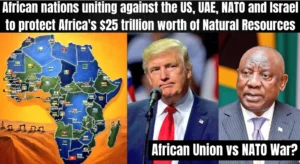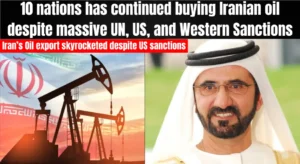1616 Views
Houthis are increasing their presence in Persian Gulf to destroy ships of the US and Israel
Houthis joining IRGC, Iraqi Militias and Hezbollah against Israeli and US ships in Persian Gulf. US yemen war, middle east war. Houthis could attack US ships in Indian Ocean, Persian Gulf and Gulf of Oman.

Recently, Yemeni armed forces miitary officer Yahya Saree said that now the Houthis are strengthening their presence in the Persian Gulf and the Gulf of Oman, so that US and Israeli ships can be targeted everywhere due to which the US can suffer maximum damage in the Middle East. Houthis say they are increasing their presence in Red Sea and Persian Gulf to destroy ships of the U.S and Israel. Recently a Yemeni military officer said that Houthis missiles will now strengthen their presence in the Persian Gulf, Gulf of Oman, and the Red Sea, where they can cause maximum damage to the US and Israeli military. Yemeni Houthis and Iranian IRGC can now together take a big step against the US in the Persian Gulf in the future because it has been said that after Muscut, Iran-US nuclear negotiations have almost failed in Rome too, which means that a direct war between Iran and the US can also happen in the future. The Houthis have claimed that, along with the Red Sea, the range of Yemeni missiles now includes the Persian Gulf, the Indian Ocean, and the Gulf of Oman.
Why will Houthis attack US military ships in the Indian Ocean, Persian Gulf and Gulf of Oman?
The Houthi movement, officially known as Ansar Allah, is a Zaydi Shia Muslim group that has been a significant player in Yemen’s internal conflicts. While their primary area of control and activity has been within Yemen, particularly the northern and western regions bordering the Red Sea, their actions have increasingly extended to maritime areas of strategic importance, including the Bab-el-Mandeb Strait which connects the Red Sea and the Gulf of Aden, leading into the Arabian Sea and eventually the Persian Gulf via the Strait of Hormuz. All this proves that the Houthis are now working like Chinese-backed North Korea’s Kim Jong Un to save Iran from the US, which is threatening Israel and US and also targeting US ships. Houthis are currently woking for Iranian Interest in Middle East including UAE, Saudi Arabia, Jordan, Kuwait, Iraq, Syria, and Egypt to paralyze American and Israeli Interest in Islamic World.
The Houthis, a Yemeni rebel group, may consider attacking US military ships in the Indian Ocean, Persian Gulf, and Gulf of Oman for several interconnected reasons, rooted in geopolitical, ideological, and strategic motivations:
- Retaliation and Opposition to US Involvement:
- The US supports Saudi Arabia and the UAE in their military campaign against the Houthis in Yemen. Attacks on US assets could be retaliation for airstrikes or perceived US interference, aiming to deter further involvement.
- Alignment with Iran:
- As part of the Iranian-led “Axis of Resistance,” the Houthis likely receive advanced weaponry (e.g., drones, missiles) from Iran, enabling them to project power beyond Yemen. Attacking US ships could serve Iran’s broader strategy to challenge US influence in key maritime zones.
- Economic and Strategic Disruption:
- Targeting critical chokepoints like the Persian Gulf and Gulf of Oman (near the Strait of Hormuz) could disrupt global oil trade, raising costs for adversaries and leveraging economic pressure to gain political concessions.
- Ideological Solidarity:
- The Houthis frame their struggle as resistance against Western “imperialism” and Israeli policies. Attacking US ships might symbolize solidarity with Palestinian causes or anti-US sentiment, bolstering their regional credibility.
- Escalation for Political Leverage:
- Provoking direct US engagement could amplify the Houthis’ domestic and regional stature, portraying them as defenders against foreign intervention. This might also divert attention from internal Yemeni challenges.
- Precedent and Capability:
- While historically focused on Red Sea targets, access to Iranian-supplied long-range weapons could enable strikes farther afield. Recent attacks on commercial shipping near Yemen suggest a willingness to expand tactics.

Turkey wants Pakistan to produce KAAN 5th Gen fighter jets to fight US sanctions, Europe, and deepen ties with Russia

China’s exports reaches a record high $1 trillion despite the Trade war with US, Europe failed to defeat China

China plans to convert $100 billion worth of gold into Yuan currency to eliminate $USD in 100+ countries

VENEZUELA OIL exports to the U.S. rose 220% in year 2025, despite WAR THREATS

EU’s top insurance company ‘Allianz SE’ loses $10 billion during Russia-Ukraine war

Trump and Saudi Arabia F-35 Deal are moving towards a new Defense Treaty, Why did Saudi Arabia betray Israel for Gaza?

Chinese CIPS has become Africa’s largest SWIFT-payment alternative, manages record-high of $800 billion

NATO nations betrayed Israel and the US for Russia’s new shipping and Economy corridor lanes in 2026

US Dollar has lost 25% of its purchasing power and dominance since 2023 due to high inflation – Top IQ holder

Nigeria Accuses USAID of Funding Boko Haram to Steal African Natural Resources, Nigeria Christian Massacre

China’s exports reaches a record high $1 trillion despite the Trade war with US, Europe failed to defeat China

NATO nations betrayed Israel and the US for Russia’s new shipping and Economy corridor lanes in 2026

NVIDIA fears the loss of $1 trillion due to Foreign FDI moving into Huawei and OpenAI’s stakes

Mamdani will impose up to 5% taxes on $5 trillion wealthiest Pro-Israeli Jewish companies

Trump Tariff has earned $6 trillion in ‘withholding taxes’ in 2025, during the Tariff war against China, India, EU and Canada

African nations uniting against the US, UAE, NATO and Israel to protect Africa’s $25 trillion worth of Natural Resources

China will save Russia’s $1 trillion Economy during Ukraine war by signing a mutual investment pact : Russia GDP Collapsed?

Iran become world’s first nation to detect Cancer, Kidney and cardiovascular disease using Nuclear medicine

BlackRock eying $14 trillion Venezuela natural resources, US-Maduro War, $26 trillion Ukraine mineral


